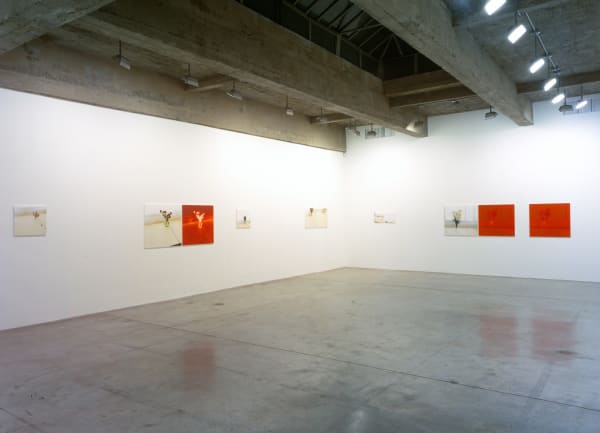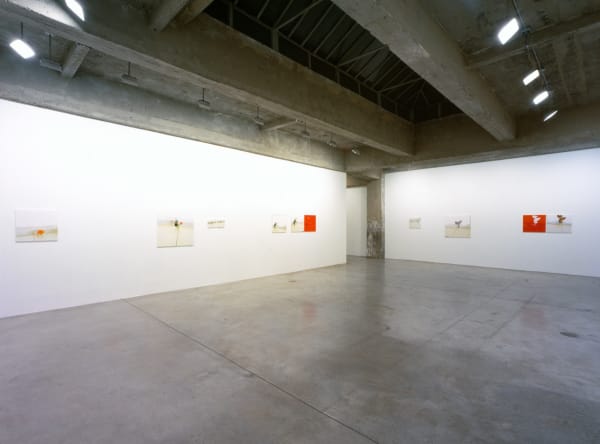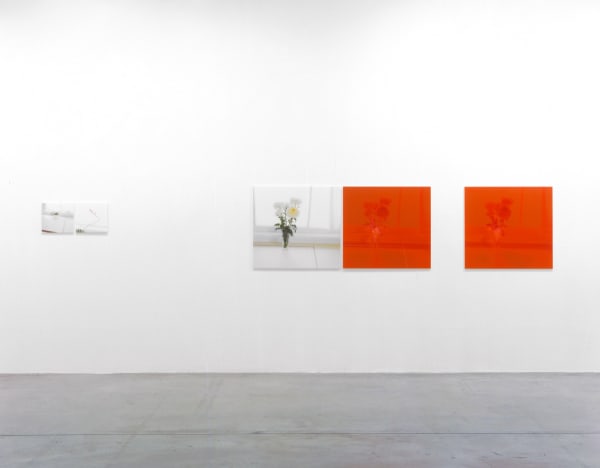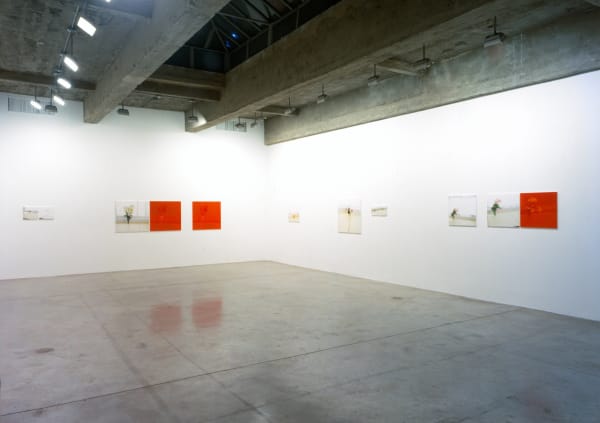Uta Barth: Tanya Bonakdar Gallery, New York
Tanya Bonakdar Gallery is very pleased to present an exhibition of new works by Uta Barth. Over the past 15 years, Barth’s work has repeatedly refused to address a central subject, presenting us instead with out-of-focus backgrounds, peripheral views and passing glimpses of scenes seen only in passing. The content of her work has always been that of vision itself and her often empty images point us back to our perceptual experience as the primary point of engagement. More recent projects (nowhere near (1999), and ....and of time.(2000)) present us with a single view of looking out the artist’s living-room window, a subject so familiar to her, that it becomes almost invisible again, creating a blind-spot in daily experience. This familiar, ambient visual environment is presented in countless repetition and all we can notice is the passage of time and changing color of light. The 2002 installation of a project titled white blind/bright red, narrows the view out her window and focuses only on barren tree branches isolated against a glaring white sky. This project again addresses the nature of vision, but a much slower vision this time; one that is mostly fixed and staring into bright light. The project traces the optical phenomena produced by this type of looking. Sequenced images drift from positive to negative frames, as they reproduce the fleeting bright colors of optical afterimages, the blinding white of visual overexposure, optical fatigue and the fading visual memory of what is seen with eyes wide open, as well as eyes wide shut.
This latest body of work (Untitled, 2005) is the first project to reintroduce a central subject back into her images. And it is a rather culturally and historically loaded one at that, as these are pictures of flowers placed on a single desk in her home. They are photographed over a period of many months, whenever she thought to place some there, perhaps as a reminder or marker that begs one to slow down vision in midst of the speed and chaos of daily work. They are not arranged and composed as a still-life might be, instead the camera frames them at awkward angles, much like a glimpse in passing or a long slow stare while seated across the room. On one hand, these images are quite banal and truly without affect, rendering whatever happens to be there (flowers set in some jar, some keys or a paperclip left on the desk, wilting petals left on its surface). On the other hand they are images, which trace pure light steaming in from behind, in every scene. And mostly they render time. They are slow and give us a prolonged engagement with the act of looking, purely for it’s own sake. The exhibitions presents us with pictures of various scale, some as diptychs and triptychs, which are occasionally interrupted by bright red optical afterimages and that bright flash of color we see, as we close and rest our eyes, if only for a moment.






